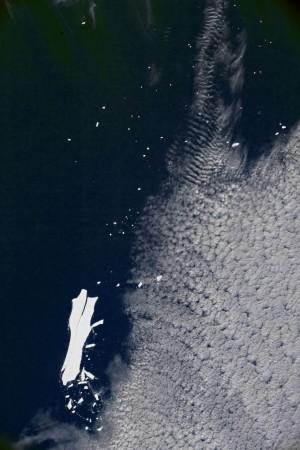
The largest-ever iceberg on record to ever break off the Antarctic ice shelf is about to finally break up and melt away into the sea. Through its time in the high seas, the iceberg has travelled far and is now near equatorial Atlantic ocean, off the coast of South America, about 10,000 km from home.
Iceberg B-15 is the largest iceberg on record and broke off the Ross Ice Shelf in March 2000, says a NASA release. The iceberg was recorded at 160 nautical miles long and 20 nautical miles wide- that is about 296.32 km long and 37 km wide. Covering a total area of 5926.4 square km, about the size of the city of Chicago, it was large enough to be seen from space.
After nearly 20 years of slowly drifting in the sea and being thrown around by warm ocean waters through this time, what is left of this massive iceberg is finally disintegrating into the sea, says NASA. Over the years, the berg has broken down and fractured into several small pieces as it slowly melts. Soon it will become too small to be monitored and tracked by the National Ice Center (NIC) which will only track icebergs that are at least 37 square km in size.

An image shot by astronauts in the International Space Station (ISS) last month showed that B-15 had wilted down to about 10 nautical miles long and 5 nautical miles wide- 18.5 km long and 9.2 km wide. While still large enough to be tracked by the NIC, it will not be monitored if it breaks up into small pieces. That is what is happening to the iceberg, says the report. With a large fracture running down the length of B-15 and smaller chunks constantly falling off the sides, the iceberg is expected to soon completely melt away.
Strong ocean currents reportedly prevented B-15 from moving through the Drake Passage, but it slowly cruised northward into the southern Atlantic Ocean. By May this year, when the photograph was taken, B-15 was only about 278 km Northwest of the South Georgia islands, says NASA.
Icebergs that are able to make it this far north relative to the Antarctic rapidly melt away and their life cycle comes to an end here. "They tend to pond with water, which then works its way through the iceberg like a set of knives," said NASA glaciologist Kelly Brunt about icebergs this close to the equator.








